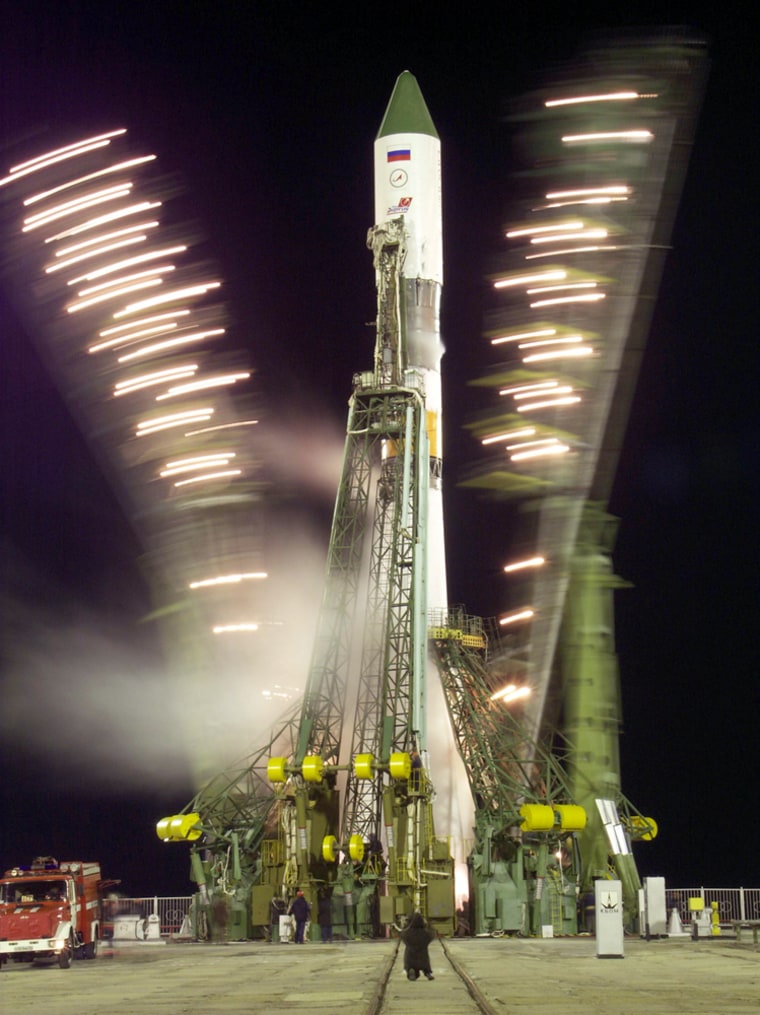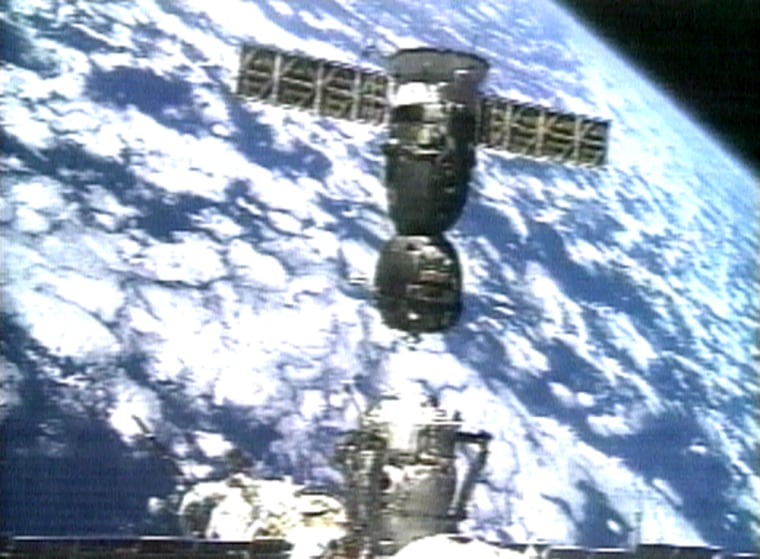As NASA frets over the space shuttle’s new troubles, Russian space officials are glowing with pride for their 40-year old workhorse — the cramped but reliable Soyuz spacecraft.
When NASA grounded future shuttle flights last week, a senior Russian space official even proposed quickly building several Soyuz vehicles to evacuate the shuttle’s crew of seven along with the two-man crew of the international space station in case the Discovery couldn’t return.
“If we work really hard, we can bring nine people down in January and February by three Soyuzes,” said Nikolai Sevastyanov, head of the state-controlled RKK Energia rocket maker.
The proposal was a bit hyperbolic — the astronauts don’t have food and water to last that long — but it reflected the esteem Russian space officials have for their veteran spacecraft.
Russia’s manned space program has had no fatalities since three cosmonauts died during re-entry in 1971, while 14 astronauts have been killed in space shuttle disasters during the past two decades.
The Soyuz and its unmanned cargo version, the Progress, date from the mid-1960s and can be used only once, unlike the space shuttles. A Progress costs about $22 million and a Soyuz slightly more. The newest shuttle, the Endeavour, cost $2 billion more than a decade ago.
Claustrophobic quarters
Compared with the roomy shuttle, the Soyuz is decidedly claustrophobic. Three cosmonauts have to stay in their seats during the entire two-day trip to the international space station. A Progress can carry only 2.75 tons of cargo, less than a fifth of what a U.S. shuttle can haul.

But Russian space officials and cosmonauts bristle at critics who point to their ship’s age, saying the latest version, the Soyuz TM, has modern engines and computers and is similar to the original Soyuz only in general shape.
In the late 1980s, the Soviet space program built its own version of the shuttle, the Buran, which made a successful maiden flight in 1988.
Soviet officials claimed at the time that the Buran was superior to its American rival because of its ability to fly on autopilot and its bigger capacity, but the program was mothballed amid the chaos and money shortages before the Soviet Union’s collapse in 1991.
Several Buran shuttles are rusting in hangars, and one sits forlornly in a junkyard adjacent to the railroad tracks that carry Soyuz assemblies to the launching pad at the Baikonur cosmodrome in Kazakhstan. Another Buran is on display in Moscow’s Gorky Park.
Planning for the Kliper
In recent years, though, earnings from Russian oil sales have allowed an increase in the space agency’s budget and its leaders are pondering a Soyuz replacement called Kliper ("Clipper").
Nikolai Moiseyev, deputy head of the Russian space agency, said recently that the Kliper would be reusable but wouldn’t be modeled on the U.S. shuttle or the Buran.
“Many experts believe that combining crew and cargo deliveries in one ship is irrational from the point of view of safety,” Moiseyev said.
Despite recent funding increases, Russia’s space budget of $638 million this year is dwarfed by NASA’s budget of $16.5 billion. Russian space officials are courting the European Space Agency, offering to jointly develop the Kliper and share costs.
During the 2½-year break in the shuttle program after the 2003 Columbia disaster, Russian spacecraft served as the sole link to the international space station.
Russia and other nations participating in the station project had been impatient to see the shuttle’s return to service because the U.S. craft are the only vehicles that can deliver new modules and other bulky equipment needed to complete construction of the space outpost.
In case of a lengthy suspension of shuttle flights, Russian space officials warned they will charge Americans for further Soyuz and Progress missions to the station. Previous flights didn’t earn Moscow any money because it needed to repay debts to NASA, but officials say flights starting in 2006 will be conducted on commercial basis.
